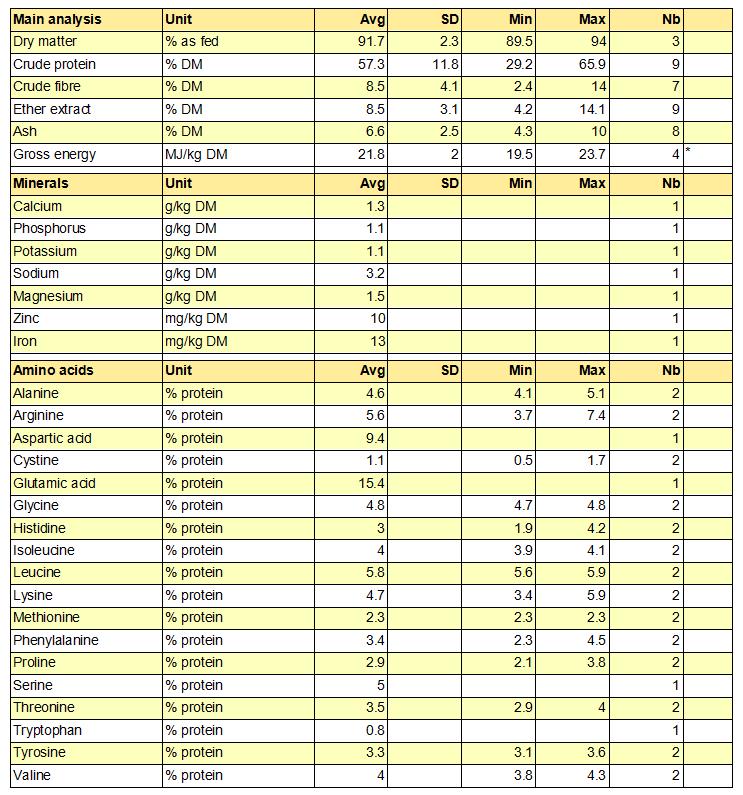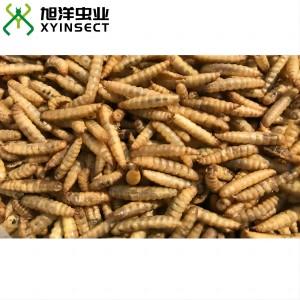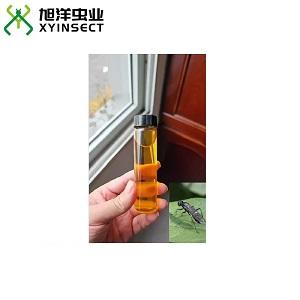Description
Locust or Grasshopper Meal, Locust or Grasshopper Powder, Poultry Feed, Pet Foods
Description
Locust or grasshopper meal was made of dried whole locusts or grasshoppers without any addtives.
Packing & Delivery
Packing Details: 20kg/25kg Kraft Paper Bag, 15MT/20'fcl or as required
Port: Qingdao or Shanghai Port
Lead time: 3-4 Weeks
OEM: Available
Supplying Ability: 50MT/Month
Tables of chemical composition and nutritional value
Avg: average or predicted value; SD: standard deviation; Min: minimum value; Max: maximum value; Nb: number of values (samples) used
Locust or grasshopper meal


The asterisk * indicates that the average value was obtained by an equation.
Poultry
Free-range chickens
In the Philippines, free-range chickens fed on grasshoppers were found to taste better and had a higher market price than those fed on conventional commercial feed (Khusro et al., 2012).
In the Tibetan Plateau, free-range chickens reared on grassland containing a large population of grasshoppers had lower live weights, breast, wing, thigh and drum weights, and higher dressing percentage and breast percentage, compared with chickens fed a soybean meal-maize diet. Breast meat had a higher redness value, shear force and protein content, and lower pH, cooking loss, moisture and fat content. Sensory panel results for breast and thigh meats showed no specific colour and juiciness, but higher scores for chewiness, flavour, aroma and overall appreciation, and lower scores for tenderness (Sun et al., 2013). The meat from free-range grasshopper-fed broilers had less cholesterol and higher concentrations of total lipid and phospholipids (Sun et al., 2012a) as well as more antioxidative potential and a longer shelf life (Sun et al., 2012b).
Broilers
Locusts and grasshoppers
More recent studies have tried to replace part of fish meal with locust and grasshopper meal and found that such partial substitution is generally suitable. In Nigeria, broilers (1-28 days old) given desert locust meal (Schistocerca gregaria) to replace 50% of the protein from fishmeal (1.7% of the total diet) gave better body weight gain, feed intake and feed conversion ratio (Adeyemo et al., 2008).
Japanese quails (Coturnix japonica japonica)
In India, Japanese quail (Coturnix japonica japonica) were fed with various diets in which grasshopper meal (Oxya hyla) gradually replaced fish meal. For a range of growth parameters, the best results were obtained with the diet in which 50% of the fish meal was replaced withOxyameal. Fecundity (i.e.the number of eggs laid per female) was significantly higher, compared with the control treatment (Haldar, 2012).









